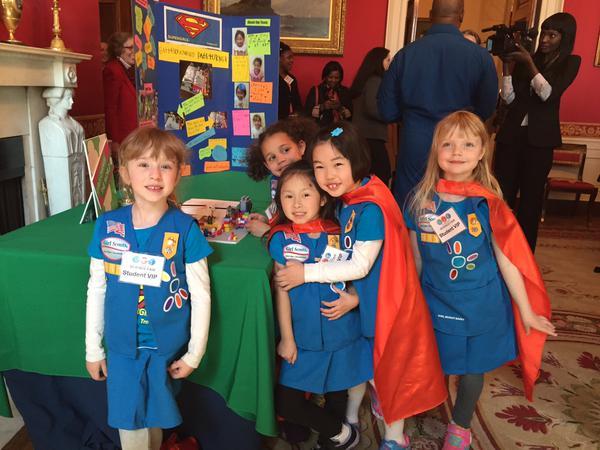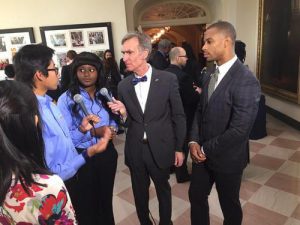
STEM achievements shine at the annual White House Science Fair.
President Obama called it “the most fun event of the year” — and with good reason.
The annual White House Science Fair was held Monday at 1600 Pennsylvania Avenue, highlighting the accomplishments of inspiring young people who are leading the way in science, technology, engineering and math (STEM) nationwide. This year’s fair didn’t disappoint, with appearances by high-tech robots, futuristic rockets, and even a group of 6-year-old superheroes.

As usual, the Alliance for American Manufacturing (AAM) tuned in to the big event, since we know quality STEM education and investment is vital to manufacturing. STEM also has been a big reason for the growth of the Maker Movement, and we were especially excited to see that one young maker had her accomplishments honored at the fair.
Lily Born — who at 11 is the youngest member of the nonprofit incubator Catalyze Chicago — is the creator of the Kangaroo Cup, a mug with three legs designed to be used by people suffering from muscular control issues. Some of my AAM colleagues and I actually got to see the Kangaroo Cup firsthand when we visited Catalyze earlier this year, so we were thrilled to see Born’s invention on display at the fair.
And as the White House notes, Born had a personal reason to create her invention:
“Lily Born saw her grandfather, who was suffering from Parkinson’s disease, struggle to use a regular cup, spilling his drink in the process. Inspired to find a solution, Lily used moldable plastic to develop a prototype that was more stable and comfortable to use… With the help of her father, she launched a crowdsourcing campaign and eventually raised enough funds to help bring the Kangaroo Cup to market. She launched [the] product directly to the market on the crowdfunding sites Indiegogo and Kickstarter, where she successfully pre-sold more than 10,000 cups.”
Other youngsters who exhibited their inventions at the science fair include 14-year-old Pittsburgh native Sahil Doshi, who created an innovative battery that harnesses carbon dioxide and waste materials to create electricity; 16-year-old Sophia Sanchez-Maes from New Mexico, who is investigating how to convert algae into biofuel; a group of San Antonio middle schoolers who compared the growth of ice crystals on the ground and aboard the International Space Station; 14-year-old Californian Holly Jackson, whose created a device that measures the capacity and strength of stitched fabric, which has potential applications in high-performance protective gear, hazmat suits and event space suits; and a group of Ohio sixth graders who were inspired to create earthquake-safe buildings made of bamboo after the 2010 earthquake in Haiti.
In addition to checking out the exhibits firsthand, the president announced $240 million new private sector investments for the “Educate to Innovate” campaign, bringing the total number of commitments to the program since it launched five years ago to $1 billion.
All of this is great news, and we hope the president and other policymakers will continue to invest in STEM, including through workforce development and investment in industrial research and development that result in good-paying STEM jobs for workers across the United States.
